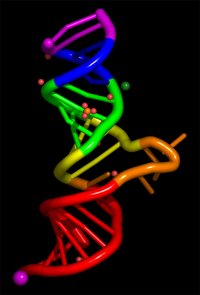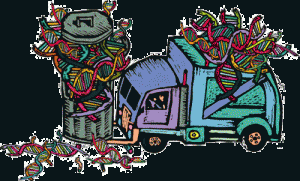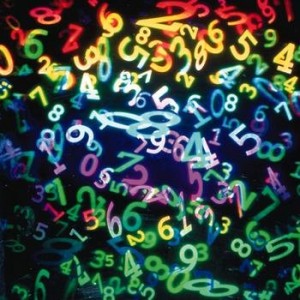Creation: Darwinian Evolutionary Frauds Pt. III

A Sunday guest post by my brilliant husband, Gregg.
Every Sunday, my clever husband offers me a “day of rest” by writing posts on the subject of his primary ministry. This is a topic that is gaining more and more attention in our modern culture. The topic, Creationism vs. Darwinism, is a subject that has broad reaching scientific, social, and metaphysical implications. He chooses to conclude each post with a message intended to hearten and bolster believers. However, for believers and non-believers alike, the primary purpose is to present scientific, historical, logical, and/or sociological data in an empirical fashion, as much as possible written in layman’s terms, and in a format suitable for supplementing any homeschool curriculum whether you choose to believe the Biblical account — or secular guesses — about the origins of human life on earth.
‘Round and Around we Go
A circular argument, or circulus in probando (Latin for “circle in proving”), also commonly called circular reasoning, is a formal logical fallacy in which the conclusion to be proved is assumed implicitly or explicitly in one or all of the premises.
P= Only an untrustworthy person would run for public office.
C=The fact that politicians are untrustworthy is proof of this.
 Such an argument is fallacious, because it relies upon its own conclusion — C=”politicians are untrustworthy”– in order to support its central premise. Essentially, the argument assumes that its central point is already proven, and loops back to use this in support of itself.
Such an argument is fallacious, because it relies upon its own conclusion — C=”politicians are untrustworthy”– in order to support its central premise. Essentially, the argument assumes that its central point is already proven, and loops back to use this in support of itself.
Circular reasoning is related to, yet separate and distinct from, the informal logical fallacy known as begging the question (petitio principii, “assuming the initial point”). A circular argument is fallacious due to a flawed logical structure and not because of an unstated and assumed to be already proven hidden co-premise as is the case with begging the question.
Vestigial Junk DNA
Possibly the greatest hoax of the modern age is that of “Junk DNA” which follows the vestigial structure philosophy. This fraud died within a decade of it’s unnatural birth — crib death as far as theories go — yet it continues to be taught and pointed to as evidence of Darwinian evolution.
The term Junk DNA was introduced in 1972 by Susumu Ohno Ph.D, to describe the portions of a genome sequence for which no discernible function could be identified. According to a 1980 review in Nature by Leslie Orgel and Francis Crick, junk DNA has “little specificity and conveys little or no selective advantage to the organism”.
In short, the claim is that between 97% and 99 % percent of human DNA (depending upon which evolutionary biologist you asked) is “junk” DNA, that is that it is noncoding DNA and does not code for any proteins. Until the late 1990s, it was thought to serve no purpose whatsoever. Darwinists claim that it was just, therefore, leftover vestigial garbage collected along the evolutionary road traveled throughout the ages. Just junk, refuse, garbage, waste, that might have once served a purpose but is now just leftover “vestigial” evolutionary errata.
Naturally, this notion is being proved more and more wrong every minute. The truth utterly devastates this claim and makes a very strong argument toward the fact that all living things were designed.
History of the Modern Junk DNA Fraud

From 1972 until about 1999, more than 98% percent of all DNA, was called “Junk DNA” by molecular biologists who were unable to ascribe any function to it. Again, an argument from incredulity or an argument from ignorance, depending on the context.
By the early 1990’s, it was observed that some of the “junk” DNA apparently served as a control factor in the genome. I don’t want to get too specific because it will likely bore you to tears, but allegorically speaking, certain parts of the “junk” appeared to serve as punctuation in the language of DNA, just as an apostrophe, quotation marks, commas, and a period are serving to punctuate this very sentence you are reading. For more information on this, I invite you to perform some research on eukaryotic genomes and how they consist of large amounts of transposable and interspersed repetitive elements (TIREs).
Further research revealed that there were highly specific instructions in the “junk” that acted as controls. In short, the controls might tell a chromosome: read this instruction set forward, now go to this particular gene for your next instructions, read this one backward, read only part of this one. In summary, a vastly, vastly complicated array of highly specific information for the creation of proteins or for things like cell division, creation of nuclei, or interaction with the histone layer.
Just to put it plainly, today we know that the so-called “Junk DNA” contains things like Noncoding functional RNA, Telomeres, Cis-regulatory elements, Introns, Pseudogenes, Repeat sequences, transposons, and viral as well as retroviral elements. All of these things perform very specific functions in living beings.
Don’t worry. I will revert to English.
For example, it was assumed that retroviral sequences in human DNA represented leftover genes from infection of retroviruses. Instead, it turns out that these sequences actually block the infection of human cells with certain viruses that contains RNA as their genetic payload. The RNA of these viruses are translated into DNA, which inserts itself into an infected cell’s own DNA.
In a remarkable pilot study published by the ENCODE Project Consortium, hundreds of scientists analyzed the functionality of just 1% percent of the human genome. Much to their surprise, the study found that the majority of noncoding DNA in the human genome is transcribed into functional RNA. Even more surprising was the finding that these transcripts extensively overlap one another, including regions on the opposite “anti-sense” strand of DNA, suggesting that there exists some highly specific and very complicated interactions among neighboring regions of DNA.
Bad Mutation! No Evolution for You!
 In identical twins who share 99% identical genes, any differences are now attributed to the noncoding DNA. The transcription factors — proteins that attach to stretches of noncoding DNA and affect how nearby genes make proteins — act at very different locations on the genomes of different people. Humans have hundreds of different transcription factors.
In identical twins who share 99% identical genes, any differences are now attributed to the noncoding DNA. The transcription factors — proteins that attach to stretches of noncoding DNA and affect how nearby genes make proteins — act at very different locations on the genomes of different people. Humans have hundreds of different transcription factors.
Researchers now suspect that differences in many traits – not just in disease risk – may be due to changes in noncoding DNA, rather than mutations within genes. It is well known among microbiologists that mutations which change the shape and function of a protein are likely to have catastrophic effects. In fact, much more catastrophic than simple variations in noncoding DNA, which may have more subtle effects and so be more likely to be passed on to future generations.

It is significant to understand that neither ever add any new information. Just as shuffling a deck of 52 cards will only ever result in 52 cards, you don’t add new genes by shuffling the genes through any means. Mutation will often delete genes, just as you may accidentally drop a card or two onto the floor in a mad shuffle if you aren’t careful. Mutational changes to noncoding DNA can lead to differences such as single-letter changes peppered across the genome as well as structural changes to the entire genome, in which large chunks of DNA are deleted, duplicated or flipped. Rare deletions of this kind have previously been linked to autism, schizophrenia and obesity. Where is the evolutionary advantage in any of these conditions?
Junk DNA Fraud meets Circular Reasoning
Recent completion of genome sequencing for many diverse vertebrates has revealed very long sequences of noncoding DNA that are either perfectly identical or very nearly identical. Between humans and mice, 481 of these sequences are 100% identical. Between humans and dogs, 481 of these sequences are 99% identical. Even between humans and chickens, the sequences are 95% identical. These sequences are found on all humans chromosomes except chromosome 21 and the male Y chromosome.
Darwinists use this data demonstrating the similarities in noncoding DNA between different species as evidence of a common ancestor. This is an example of circular reasoning in the extreme.
 What they refuse to recognize or even acknowledge is this fact. The probability is less than one chance in 1022 of finding even ONE such sequence in 2.9 billion bases under even a very simple model of neutral Darwinian evolution with independent substitutions at each site. Now double that for every other species you compare and the odds quickly exceed anything resembling mathematical possibility. Far from proving a common ancestor, the similarities on these scales much more evidence a common Designer.
What they refuse to recognize or even acknowledge is this fact. The probability is less than one chance in 1022 of finding even ONE such sequence in 2.9 billion bases under even a very simple model of neutral Darwinian evolution with independent substitutions at each site. Now double that for every other species you compare and the odds quickly exceed anything resembling mathematical possibility. Far from proving a common ancestor, the similarities on these scales much more evidence a common Designer.
Even more impressive is the fact that among numerous human individuals, there is almost no sequence variation in the noncoding DNA — only perhaps 6 out of over 100,000 bases. The highly unlikely existence of these identical sequences indicate that they must absolutely required for survival, since the natural mutation rate in humans would have been expected to produce at least 20 times more variation than what we observe.
So Darwinists simultaneously claim that the highly specified noncoding DNA is merely vestigial “junk” leftover DNA from evolution, and that because we share so much in common with other species that we all evolved from the same common ancestor — all in defiance of mathematical probability, their own feverishly defended evolutionary models, and simple common sense. And that, in a word, is a fraud of grand proportions when everyone knows better.
The Truth
The truth is that randomness cannot explain the origin of life on this planet. Chaos cannot account for creation. Entropy cannot build. The best materials in the world are useless without instructions and a maker.
The truth is that despite the tendency to explain things like genetic drift away as genes coming being under “evolutionary pressure” — the truth is that evolution is not sentient and cannot apply pressure. This goes back to Lamarkism and is nothing more than wishful thinking on the part of Darwinists.
The truth is that we were designed — created — by a Creator who is the most creative and intelligent Being in the known universe. And what’s more, He told us the story of how He did it, which account can be found in Genesis chapters 1 through 11.
Logical, valid, and scientifically sound. I invite you to see for yourself.
God Bless you and yours.
Gregg
Resources: Additional Posts dealing with Creation and Darwinism


It is a misuse of words to call the idea of ‘junk DNA’ a fraud in any way.
HD,
.
Please review the commenting policy. I cannot approve a comment that is little more than a list of links to other websites whether they are relevant to the topic at hand or not. I am interested in YOUR opinions. Please express them.
.
Thank you and God Bless,
Gregg
That will take me a while, but perhaps you could also post the sources for your comments.
(really, it doesn’t matter to me if you post the links, but you might want to take a look at them yourself.)
You mentioned a role for introns. Yes, introns have a function, but to what extent is it related to their sequence? Would you be able to discuss the particular function of introns, and specifically their particular sequence (as opposed to length) and what percent of intron sequence you are talking about, and what percent of introns you are talking about? And are you able to do this without referring to your sources first?
Also you mentioned a role for pseudogenes. I mentioned in a comment on a different post that there are pseudogenes for the sweet taste receptor is several feline species – house cats and I think tigers and cheetahs. Can you talk about the role of that pseudogene?
Suppose that pseudogenes are the result of degeneration after the fall (which you mentioned in your frauds II post). If pseudogenes are made degenerate as a result of the fall, wouldn’t that imply that they were not given a function by any design and that they would therefore be fairly considereded to be nonfunctional?
Hi Gregg,
.
I’m interested in one of your claims. I’d like to know who teaches “Junk DNA” as evidence of Darwinian evolution and what their argument is.
.
I assume the 481 sequence claim refers to “Ultraconserved Elements in the Human Genome” by Bejerano et al. The main author has actually admitted the probability is less than one chance in 1022 of finding one such sequence in 2.9 billion bases assuming neutral DNA. See slide 17 in her presentation. If the link doesn’t work then try this and select quick view. Clearly one possibility is that this DNA is not neutral.
.
May peace be with you,
Neil.
I am not able to read the usual Ohno reference online in its original source, but there’s what seems to be a scan of it on a website online (not sure about the website itself). IF you read that scan, you can see that in the title of the letter he doesn’t call it junk DNA, he calls it “junk DNA”, which has a different significance. In the text he clearly includes regulatory sequence as functional, which means that from the ’70s the idea existed that not all noncoding DNA was nonfunctional. And he referred to nonfunctional DNA including satellite sequences as possibly having spacer functions, so again, the idea that noncoding DNA could have a structural function (aside from its sequence) was present.
Mistake in my last comment: not “junk DNA” but “junk” DNA.
Hi Gregg and HD,
.
My previous comment should read “10^22”, not “1022”. I was trying to be too clever with HTML…
.
I also read the Ohno paper and a couple of things struck me. One is that it’s not based on evolution. It’s a theoretical paper based on what happens on a per-generation basis. See the last four lines of page 366. That also means it’s not an argument from ignorance because it’s not pointing to particular sections of DNA and claiming that we don’t know what they do. It’s looking at the whole DNA and claiming that we wouldn’t be successful at reproducing if it all contained important information.
.
It also doesn’t claim to provide evidence which supports evolution. I’m afraid I don’t see where the fraud is.
.
As recognised in the discussion section (p. 370), the Ohno paper is based on a suspect assumption that there are 10^-5 mutations per locus per generation across the whole genome. However, there has since been an experiment which has shown that 1% of mouse DNA is disposable as far as they were able to tell.
.
May peace be with you,
Neil.
Hi Gregg,
.
To be fair, I should point out that DNA can have a purpose but also be disposable. For example, the DNA might carry backup copies of genes. You could get rid of the backup and still have a viable organism – providing the main copy doesn’t get damaged. At the moment I don’t think we can really know if “junk” DNA is really junk or not. All we know is what we observe.
.
May peace be with you.
Neil.
That is a much stronger argument for design than for randomness.
Thanks for putting me straight. It’s all clear now… not.
Anyway, back to the point I was making. This isn’t actually fraud of any sort.
I’m trying that comment again – see if this one works better.
……………
.
” it was assumed that retroviral sequences in human DNA represented leftover genes from infection of retroviruses. Instead, it turns out that these sequences actually block the infection of human cells with certain viruses that contains RNA as their genetic payload”
…………
.
I’m having computer problems and I can’t look things up easily right now. But even if there are specific cases where the second sentence is accurate, that doens’t mean that retroviral sequences were not left over from viral infections.
………..
.
“… as well as structural changes to the entire genome, in which large chunks of DNA are deleted, duplicated or flipped”
……………..
Duplication allows one of the gene copies to mutate into new sequences thta may turn out to be useful – that is, new information, while the other copies maintains its original function. I think it was Ohno who first suggested the possibility of whole gtenome duplications – as many as two duplications, meaning it is possible to find four versions of some genes in most vertebrates.
…………………
.
”What they refuse to recognize or even acknowledge is this fact. The probability is less than one chance in 1022 of finding even ONE such sequence in 2.9 billion bases under even a very simple model of neutral Darwinian evolution with independent substitutions at each site.”
……………….
.
I’m not sure, but I think you may be misreading this section. Or it could be that I am misreading it or misunderstanding your meaning; I’ll need to check it from a different computer. The key word there might be ‘neutral’.
“Recent completion of genome sequencing for many diverse vertebrates has revealed very long sequences of noncoding DNA that are either perfectly identical or very nearly identical. Between humans and mice, 481 of these sequences are 100% identical. Between humans and dogs, 481 of these sequences are 99% identical. ”
….
The article doesn’t say these are very long- in fact they are short. the article just looked at regions longer than 200bp, and almost all of those regions were between 200-400bp.
Hi Gregg,
.
I looked up the ENCODE Project Consortium paper because it sounds from your description as if it could undermine evolution. Of course, central to your description is the idea that noncoding DNA is functional.
.
So your claim was that “Much to their surprise, the study found that the majority of noncoding DNA in the human genome is transcribed into functional RNA.” The abstract of the paper states that “First, our studies provide convincing evidence that the genome is pervasively transcribed, such that the majority of its bases can be found in primary transcripts”. That says much the same thing… except for the word functional.
.
In the body of the paper (page 800 – don’t worry it’s just the 2nd page of the actual paper), it says “This suggests the possibility of a large pool of neutral elements that are biochemically active but provide no specific benefit to the organism.” So it’s unlikely the author would go on to say that the majority of noncoding DNA in the human genome is transcribed into functional RNA.
.
I guess you got the word “functional” from a page on godandscience.org or somewhere like that. Anyway, there’s no reason for them to misrepresent the paper in this way in order to spread the truth.
.
May peace be with you,
Neil.
“What they refuse to recognize or even acknowledge is this fact. The probability is less than one chance in 1022 of finding even ONE such sequence in 2.9 billion bases under even a very simple model of neutral Darwinian evolution with independent substitutions at each site. Now double that for every other species you compare and the odds quickly exceed anything resembling mathematical possibility. Far from proving a common ancestor, the similarities on these scales much more evidence a common Designer”
…………….
I’m guessing you think the 1 in 10 to the 22 probability is the probability of having these identical sequences in different species occur at all through evolution in general. I’m not sure that’s your thinking, so maybe you could clarify.
..
But if I understand correctly, that is not what the article is saying. It is saying that is the probability of having two species which have descended from a common ancestor maintain those identical sequences over many years if there were no selection going on – if there were only random mutations and drift. Basically this suggests there is an unknown function for these regions, otherwise they would not be identical. Another possible explanation which they mention is that these regions could have a reduced mutation rate and/or a higher self-repair rate. (also, these are not all innoncoding regions – some include parts of exons.)
I’m still thinking about your post.
You didn’t choose to print the comment with links that I sent, but some of them listed examples over the years of biologists mentioning that there would probably turn out to be some functions for some of the noncoding DNA. The door was NEVER closed to that idea.
..
As time goes on, as new techniques are developed and new information is gathered, it is possible to investigate those noncoding DNA sequences more. So maybe lots of new functions will be found. That is how science works. The door is not closed. But you have to explore what you can explore with whatever tools you have at the time, otherwise you never will be able to investigate the aspects that are currently inaccessible.
.
I don’t think you said this, but I have seen some creationist supporters make remarks about how if only the biologists hadn’t closed their minds to the possibility that, for instance, ‘junk’ DNA had a function, biology would be so much farther along. That is just incorrect. The ability to explore those unclear regions is only available because of the work that was done on other problems that were more easily addressible with the techniques available at the time.
.
I think from what I’ve read that more regions of the noncoding DNA are being found to have regulatory functions. And probably there will be more found.
At the same time, I think there still is a lot of noncoding DNA which really is useless – the various transposons and the long strings of satellite DNA with repetitive sequences and the pseudogenes. They are considered useless for good reasons – not out of incredulity but because of their sequences. From what I’ve read it seems like both things are reasonable: that there is a some noncoding DNA which may turn out to have important and interesting functions, and at the same time there is a large amount of DNA that is unnecessary, and whose sequence could be legitimately called junk, and that are legitimately considered remnants of evolution.
.
It is incorrect to call the idea of ‘junk DNA’ a fraud. For one thing, ‘fraud’ means a deliberate attempt to mislead people with a known falsehood, and this is totally not true. People who talked about ‘junk DNA” had a basis for saying that at the time. It was not a hoax.
And they have a basis for saying it now. There IS useless DNA there (as far as can be seen at this time). So it is not a fraud to say that. But there was and is a possibility for function to be discovered for the DNA with no apparent function; that was always true.
….
Science, in particular biology, is always trying to gather new understanding of areas that are unclear or unknown. By its very nature, biology is dealing with incomplete knowledge and using techniques that may be replaced with more precise ones in the future. Calling something ‘junk’ is made in the CONTEXT that science keeps picking away at problems and that the label of today might get replaced with unexpected information in the future. But scientists have to work with what information and techniques they have now in order that the new discoveries will be made in the future.
(One more comment:
When you were reading about ‘junk’ DNa, what was your source? Was it from actual scientists’ writings? Or was it from news media, which often try to make things sound more extreme and sensationalized in order to get people’s attention? Educational materials from textbook companies that often over-simplify material? Creationist sites that want to make everything related to evolution sound warped and failing and evil?)
Hi Gregg,
.
Reading your post, I would have thought that the case for evolution
based on “junk” DNA went something like this: We don’t know what these
sequences do, so they must be left overs from earlier species. That
means that there were earlier species and so evolution is true. It
turns out that the case is a bit more subtle than that.
.
First, I think it would be a good idea to remind people what the
scientific method is. The basic outline is to form a hypothesis
(something which you want to know whether it’s true or not), make
predictions based on the hypothesis which are unlikely to be true
according to competing theories. Then you look to see if the
predictions are correct or not. If the predictions are correct then
the hypothesis is likely to be a good reflection of the truth. If the
predictions are incorrect then the hypothesis is likely to be false.
.
I’d also like to remind people about the difference between science
and circular reasoning. Science makes predictions and checks them.
Circular reasoning doesn’t. There’s the danger that science looks
like circular reasoning because you assume the hypothesis is true in
order to make the predictions. But that’s okay because science goes
on to test the predictions which in turn tests the hypothesis.
.
In this case, our hypothesis is that humans, other primates and guinea
pigs evolved from a species which was able to make vitamin C for
itself. I’m sure you’re aware that humans cannot make vitamin C
internally (we can do it in the lab of course) which is why we need to
eat fruit to avoid scurvy. It turns out that other primates and
guinea pigs can’t either. However, most other organisms can make
vitamin C which is, for example, why dogs and cats don’t need to eat
fruit. So evolution expects primates and guinea pigs to have an
ancestor which had the ability to make vitamin C.
.
This gives rise to several predictions. The first is that primates
and guinea pigs should have DNA sequences which roughly match the
genes required for producing vitamin C. Second, at least one of those
genes should be broken. It should be a pseudo-gene. The third
prediction is that we should expect more closely related species
within the primate family to have smaller differences between the
pseudo-genes. For example, we should expect pseudo-genes in humans to
be more similar to those in chimpanzees than those in orangutans.
This is because we expect the pseudo-gene to undergo mutations and to
drift randomly. Since chimpanzees and humans branched off from other
primates more
recently than orangutans, there has been more time to pick up
mutations in the later case. I won’t go into the details, but we can
be quite specific about the amount of difference we expect to find
between the pseudo-genes of pairs of species.
.
The next question is how likely these predictions are according to
creation, so I’m going to put my creationist hat on. As a
creationist, I can’t see a good reason for thinking that the first
prediction is true. Adam and Eve were eating fruit in the garden of
Eden and would have had a plentiful supply of vitamin C. True, God
might have decided to give them those genes, but there seems no need.
That said, there’s no strong reason to say that God would not have
given them those genes. I’ll give creationists the benefit of the
doubt here and say this one is 50/50.
.
So that’s for humans. The same question goes for other primates and
guinea pigs. I don’t know what an accurate answer is, so I’m going to
give creationists the benefit of the doubt again. Let’s say 50/50
that God gave the genes needed to produce vitamin C to all animals.
.
If humans, other primates and guinea pigs did originally have the
ability to produce vitamin C, it’s clear that we’ve since lost it,
presumably as a result of the fall. Therefore, creationists can also
predict that there should be a pseudo-gene among the genes which are
similar to the ones needed to produce vitamin C.
.
That leads us to the third prediction. Actually, creation makes a
different prediction from evolution in this case since there’s no
branching tree of species according to the Biblical account. All the
different species were created at the same time and then progressed
independently from then on. This means that we expect the
pseudo-genes in humans, chimpanzees and orangutans to have diverged by
roughly the same amount. No pair should be significantly closer than
any other pair. I can take my creationist hat off now.
.
So far, so good. We’ve formed a hypothesis and made predictions based
on it. We’ve also made predictions based on a competing theory. The
first two pairs of predictions made by the two theories have been far
too similar to be useful. However, the third pair of predictions made
by the theories have been different which means that those two
predictions are a good test of the theories.
.
Finally, we need to check the predictions. Ohta and Nishikimi
published their work in 1999 building on Nishikimi’s earlier work.
The L-gulano-gamma-lactone oxidase gene was found in humans,
chimpanzees, orangutans, macaques and guinea pigs. The comparison of
the pseudo-gene was done between humans, chimpanzees, orangutans and
macaques and was as expected according to evolution.
.
http://www.ncbi.nlm.nih.gov/pubmed/10572964?dopt=Abstract
.
So this shows that there is evidence for evolution based on junk
DNA. It’s based on the scientific method rather than circular
reasoning. It’s not a fraud.
.
May peace be with you,
Neil.
Hi Gregg,
.
Is everything alright? You’ve been pretty quite recently and I’m not sure my comments are getting though…
.
May peace be with you,
Neil.
…except that one which seems to have made it through straight away… Is there something strange happening with your blog software?
.
May peace be with you,.
Neil.
Hi Neil:
Gregg’s working 14-hour days, 6 days a week. He has most of Sunday off this week, though. Hopefully, he’ll get a chance to continue with your conversations (and post a new creation post.)
We have a filter. There are key words that automatically get put in moderation. Gregg gets comments from a lot of angry people who don’t like Scientific Creationism. He prefers to keep the hate off of my blog. You are on the approved list, but if you use certain words associated with evolution, the post is going to go into moderation just by default. Sorry about that! I get them approved as fast as I can.
Hi Hallee,
.
Gregg’s working 84 hour weeks? I’m not surprised he’s not spending time on the blog. Well I hope things change for him soon. That can’t be fun at all, for him or for you.
.
Anyway thanks for the explanation and for approving my comment.
.
May peace be with you,
Neil.
Neil, thanks for that comment.
Hallee, sorry to hear that Gregg is having to work so hard. It sounds SO stressful over there. i wondered too ig the fourth of July made added work. stress.danger.
The good thing about it is that time is going by faster for him. He’s working so hard that time doesn’t have time to drag. The bad thing is that our communication time is cut way low. I never see him online anymore and our phone calls are extremely limited.
He’ll be home for 4 weeks a week from Saturday. 16,406 minutes from now — but, who’s counting? :-)